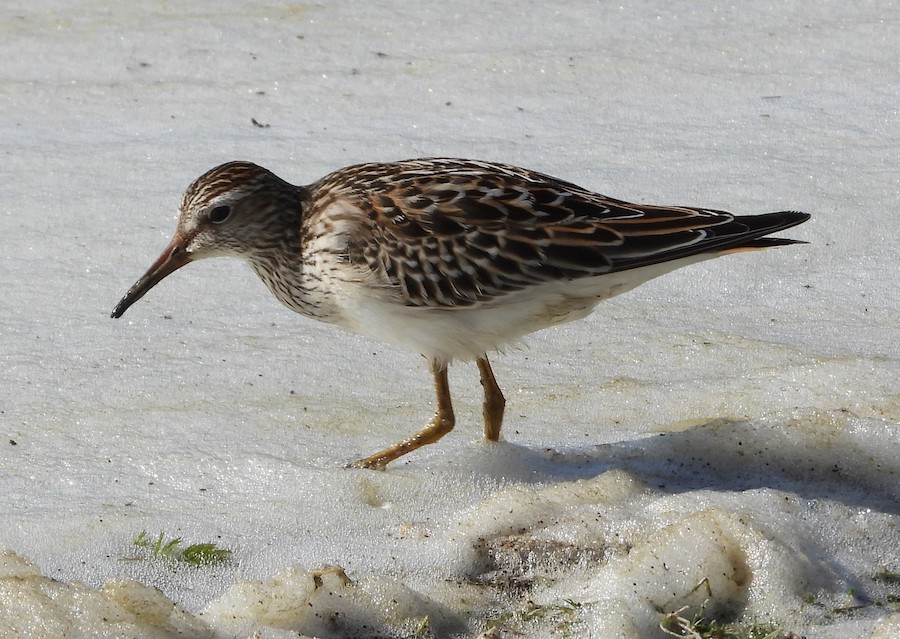Bird News: September 2021
- 3 October 2021
-
 Trevor Riddle
Trevor Riddle
- Bird News, Birds

The roost at Wemberham Lane was devoid of Swallows early in the month but 20 Pied Wagtails were taking advantage and roosting there. It will be interesting to see if their numbers build up as Autumn progresses. Around 200 Starlings were congregating on a nearby pylon and it’s possible that they may start to roost in the reeds. It does demonstrate what a bountiful habitat a medium sized reed bed is – insects for nesting Reed Warblers and other species in the Spring and early Summer, flying insects for Swallows and House Martins and a safe roost which is then suitable for Pied Wagtails.
Kestrel, Peregrine and Raven were all pylon perching with Little Egret and a Wheatear (5th) by the pylon works site. It seems odd that Wheatears that generally nest in remote upland sites often pause in urban type areas on migration. In this case the bird was perched immediately next to a large pile of stone, plant and materials for a Hinkley Connect work site.
Noisy Tawny Owls were reported from Claverham Road with a Little Owl joining in. A Snipe on Kenn Moor near Littlewood was unusual in early September. A flock of 25 Linnets and a couple of Skylarks were nearby. Another very loud Tawny was calling by Wemberham Lane and four (!) were calling near the Yatton North End mini roundabout. The Peregrine (and I’m pretty certain that it’s the same bird) was back on a favourite pylon. One contractor had said that it will be ten years before the new pylons are erected so maybe the Peregrine won’t lose its favourite perch for some years.
In the Mendip Road area Mike Salter was surprised and delighted to see an Osprey drift low over his garden on the 15th. This bird was on its migration to West Africa. Another migrant was a Spotted Flycatcher on Kenn Moor associating with a flock of Blue Tits, Great Tits and a couple of Chiffchaffs.
The Peregrine was showing well on the nearest pylon south of Wemberham Lane mid month with a pair of Ravens towards Congresbury. 50 Swallows were around Riverside Farm, most of these resting and feeding up with just a few local breeding birds remaining. A Chiffchaff was singing its name nearby and there were an encouraging number of Moorhens on the Rhynes, adults and juveniles.
A long walk around the Wemberham area on the 20th produced the aforesaid Peregrine (the fourth morning in a row), about a dozen Swallows, two singing Chiffchaffs and two Jays. Emily spotted a Kingfisher on the Little River, always a nice record. The River Yeo yielded a Green Sandpiper, two Grey Wagtails, a Snipe, two Wheatears , a Skylark and a Meadow Pipit. A good range of species but just ones and twos.
A Carrion Crow devouring a rat was spotted by one of our members in Congresbury whilst despite the change in the weather two of our most colourful birds, namely Green Woodpecker and Kingfisher were seen from Wemberham Lane. There were regular reports of a Kingfisher from the Little River too. The change in the weather at the month end and the harvesting of maize attracted a huge flock of Corvids, mostly Jackdaws. Black Headed Gulls arrived in winter flocks alongside the resident Herring Gulls.

A trip to Cheddar Reservoir to see a Pectoral Sandpiper, a small wader from North America was successful, see Mark Savage’s picture. It was an extremely confiding bird, a trait associated with birds that have not been near to humans and don’t perceive them as a threat. It was feeding by picking tiny insects (invisible to us) from the water’s edge. As a bonus an Osprey flew over, almost certainly a juvenile at this time of year.
Finally, thanks to everyone who has sent me information on their sightings- it’s interesting to know what’s about and enables me to produce a more comprehensive and hopefully interesting report. Please send sightings to birds@yacwag.org.uk
© Copyright YACWAG, or original authors. All rights reserved. | Registered charity 1076362 | Privacy policy | Cookie policy | Terms & Conditions |Web design: StanfordGraphics


